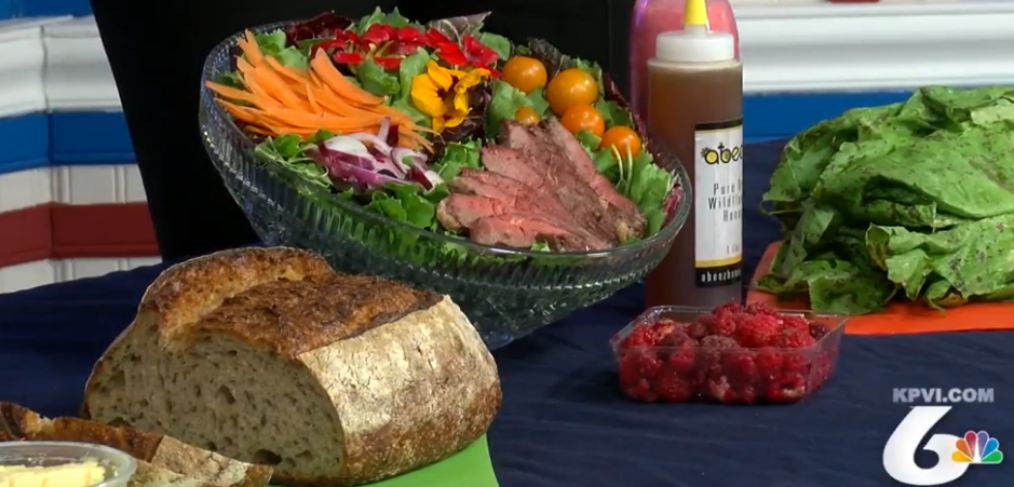
Build a Balanced Meal
It’s smart to add more fruits and vegetables to your diet and skip the processed food. But can you eat too many plant-based foods? On the other hand, can you eat too much protein or fat? Balance is crucial to avoid metabolic disorders, hormone disruption, blood sugar disruption, and disease.
How Many Vegetables is Enough?
Americans don’t get nearly the quantity of vegetables they should, so more than likely, you’re going to be adding, not subtracting! Aim to fill half your plate with vegetables – both raw and cooked. Raw vegetables will have more vitamins and enzymes, but cooked vegetables will be more digestible and their minerals will be more bio-available. Don’t count starchy ones, like corn, peas, and potatoes. They come under carbohydrates. But do prepare an array of colors – oranges, yellow, purple, red, and green. Pick a variety of vegetables that represent different parts of the plant, such as these:
- Shoots and stalks:sprouts, asparagus, celery
- Leaves: lettuces, chard, spinach, beet greens, mustard leaf
- Buds and flowers: broccoli, cauliflower, cabbage, artichoke
- Fruits:green beans, cucumbers, tomatoes, squashes, eggplant
- Roots: turnips, beets, rutabaga, parsnips, onions, garlic, carrots
Can I Get Sufficient Protein on a Vegan Diet?
Protein is tricky. It musn’t be too much or too little, but must be just right – like the porridge in Goldilock’s story. An excess of protein can cause gout and kidney disease. But because protein is what provides the building blocks for your body, if you don’t have enough, you have trouble making hemoglobin (blood cells), hormones (including thyroid), antibodies (to fight disease) and enzymes (the catalysts for every process from digesting to growing.) Even detoxification requires protein.
So try to make 25% of your calories, or at least 1/4 of your plate, protein. Women ought to target 20 grams per meal as a minimum and men would be well-served with at least 30 grams per meal. Those who don’t eat animal products should make a conscientious effort to add up their protein. Yes, quinoa is a high-protein “grain”. But it’s still 4/5 carbohydrate (32 grams carbohydrate, 8 grams protein). The same is true for most legumes. While they contain protein, they are around 75% carbohydrate. One of the best plant proteins would be spirulina, at 2 grams carbohydrate and 4 grams protein per tablespoon. Tofu also rates high in protein – but the processed soy is another story completely!
What is Carb-Loading?
While there are essential fatty acids that the body cannot make and essential amino acids that can only be derived from proteins in the diet, there are no essential carbohydrates. But being carb-free isn’t the answer either, as grains, legumes, nuts, seeds, fruits, and vegetables all have vitamins, antioxidants, and phytonutrients that the body thrives on. The key is to focus on eating carbohydrates in their whole form, as close to nature as possible. Avoid refined sugar, white flour, and other processed forms of carbohydrate. Afterall, real foods don’t come with a label!
If more than 50% of your calories are coming from carbohydrate, you are robbing your body of its need for proteins and fats. I believe that most individuals do very well with no more than 1/4 of their plate coming from starchy carbs: whole grains, legumes, and starchy vegetables. So don’t load up, here!
But Go Easy on the Fat, Right?
Not exactly. Fat is the primary fuel source for your marathoning heart, and the very substance of your brain cells. If you don’t have enough fat, there isn’t a single cell in your body that won’t suffer as it tries to build the membrane around itself that lets nutrients in and siphons wastes out. While carbohydrates provide quick energy, fats provide sustained energy. Be sure to include both saturated and unsaturated types in your diet. But avoid hydrogenated, partially hydrogenated and trans-fats at all costs! Be wary of processed oils that may already be oxidized and rancid. It’s best to stick with unrefined and cold-pressed varieties, especially with those oils that are liquid at room temperature.
A general rule of thumb is to eat a couple of teaspoons of fat for every fist-ful of carbohydrate and palm-ful of protein.
You can learn more about balancing your macronutrients in this class.
